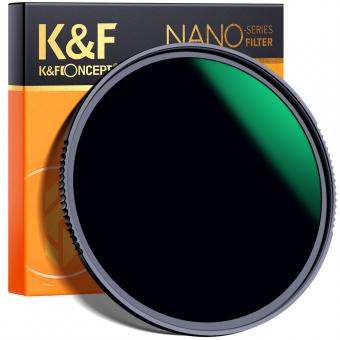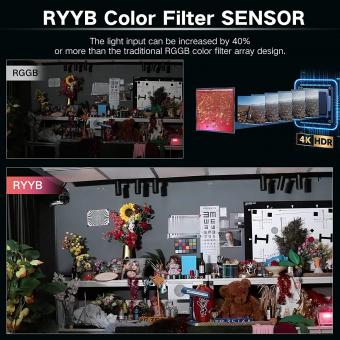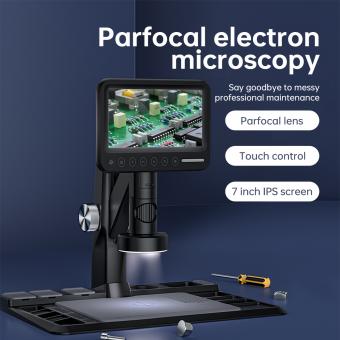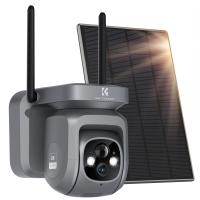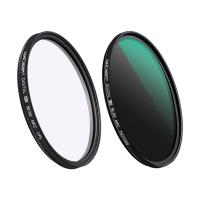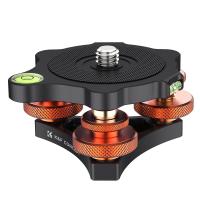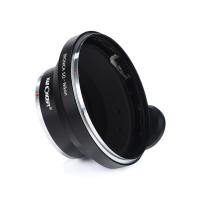How Much Do Electron Microscopes Cost ?
The cost of electron microscopes can vary significantly depending on the type and specifications of the microscope. Basic models can start at around $50,000, while more advanced models with higher resolution and additional features can range from $200,000 to several million dollars.
1、 Types of Electron Microscopes and Their Cost Range
Types of Electron Microscopes and Their Cost Range
Electron microscopes are powerful tools used in scientific research and various industries to observe and analyze samples at the nanoscale level. They offer much higher resolution and magnification capabilities compared to traditional light microscopes. However, the cost of electron microscopes can vary significantly depending on the type and specifications required.
There are three main types of electron microscopes: transmission electron microscopes (TEM), scanning electron microscopes (SEM), and scanning transmission electron microscopes (STEM). Each type has its own unique features and applications.
TEMs are used to study the internal structure of samples by transmitting a beam of electrons through them. They provide high-resolution images and are commonly used in materials science, biology, and nanotechnology research. The cost of a basic TEM can range from $200,000 to $1 million, depending on the specifications and additional features.
SEMs, on the other hand, are used to study the surface of samples by scanning a focused beam of electrons across them. They provide detailed 3D images and are widely used in fields such as materials characterization, semiconductor analysis, and forensic science. The cost of a basic SEM can range from $50,000 to $500,000, depending on the specifications and additional features.
STEMs combine the capabilities of both TEMs and SEMs, allowing for high-resolution imaging and elemental analysis. They are used in fields such as materials science, nanotechnology, and biological research. The cost of a basic STEM can range from $500,000 to $2 million, depending on the specifications and additional features.
It is important to note that these cost ranges are approximate and can vary based on factors such as brand, model, and additional accessories. Additionally, the latest advancements in technology and the introduction of new features can also impact the cost of electron microscopes.
In conclusion, electron microscopes are valuable tools in scientific research and industry, but their cost can vary significantly depending on the type and specifications required. Researchers and organizations should carefully consider their specific needs and budget when selecting an electron microscope.

2、 Factors Affecting the Cost of Electron Microscopes
Factors Affecting the Cost of Electron Microscopes
The cost of electron microscopes can vary significantly depending on several factors. These factors include the type of electron microscope, its specifications, additional features, and the brand. Here, we will discuss these factors in detail.
1. Type of Electron Microscope: There are several types of electron microscopes available, including transmission electron microscopes (TEM), scanning electron microscopes (SEM), and scanning transmission electron microscopes (STEM). Each type has its own unique features and capabilities, which can affect the cost. Generally, TEMs tend to be more expensive than SEMs due to their higher resolution and imaging capabilities.
2. Specifications: The specifications of an electron microscope, such as resolution, magnification range, and imaging modes, can greatly impact its cost. Higher resolution and magnification capabilities often come with a higher price tag. Additionally, specialized imaging modes, such as energy-dispersive X-ray spectroscopy (EDS) or electron backscatter diffraction (EBSD), can also increase the cost.
3. Additional Features: Some electron microscopes come with additional features or accessories that enhance their functionality. These can include automated sample handling systems, environmental chambers for studying samples under controlled conditions, or advanced software for image analysis. The inclusion of such features can significantly increase the cost of the microscope.
4. Brand: The brand of the electron microscope can also affect its cost. Well-established and reputable brands often charge a premium for their products due to their reliability, performance, and customer support. However, there are also more affordable options available from lesser-known brands that may still offer good performance.
It is important to note that the cost of electron microscopes can vary widely, ranging from tens of thousands to millions of dollars. The latest point of view suggests that with advancements in technology and increased competition, the cost of electron microscopes has been gradually decreasing over the years. However, high-end models with cutting-edge features and specifications can still command a significant price. Additionally, the cost of maintenance, service contracts, and accessories should also be considered when budgeting for an electron microscope.

3、 Average Cost of Transmission Electron Microscopes (TEM)
The average cost of transmission electron microscopes (TEM) can vary significantly depending on the specific model, features, and capabilities. Generally, TEMs are considered to be high-end scientific instruments and are therefore quite expensive.
Basic TEM models can start at around $200,000, while more advanced models with additional features and higher resolution capabilities can cost several million dollars. The cost of TEMs is primarily driven by factors such as the quality of the electron source, the stability of the microscope, the resolution and magnification capabilities, and the presence of specialized detectors and accessories.
It is important to note that the cost of TEMs has been decreasing over the years due to advancements in technology and increased competition among manufacturers. Additionally, there are also refurbished TEMs available in the market, which can offer a more affordable option for researchers and institutions.
The latest point of view suggests that the cost of TEMs is expected to continue to decrease in the future as technology advances further. This is particularly true with the development of new electron sources, such as field emission guns, which offer improved performance at a lower cost. Furthermore, the increasing demand for TEMs in various fields, including materials science, nanotechnology, and biological research, is also driving manufacturers to develop more cost-effective solutions.
In conclusion, the average cost of transmission electron microscopes can range from hundreds of thousands to several million dollars. However, with advancements in technology and increasing competition, the cost is expected to decrease in the future, making TEMs more accessible to a wider range of researchers and institutions.

4、 Average Cost of Scanning Electron Microscopes (SEM)
The average cost of scanning electron microscopes (SEM) can vary significantly depending on the specific model, features, and brand. Generally, SEMs are considered to be high-end scientific instruments and are priced accordingly.
On average, a basic SEM can cost anywhere from $50,000 to $150,000. These entry-level models typically offer lower resolution and fewer advanced features. However, they still provide sufficient imaging capabilities for many research and industrial applications.
For more advanced SEMs with higher resolution and additional features such as energy-dispersive X-ray spectroscopy (EDS) or focused ion beam (FIB) capabilities, the cost can range from $150,000 to over $1 million. These high-end models are often used in specialized fields such as materials science, nanotechnology, and semiconductor research.
It is important to note that the cost of an SEM is not limited to the initial purchase price. Additional expenses include maintenance, training, and potential upgrades. These ongoing costs should be considered when budgeting for an SEM.
It is worth mentioning that the latest advancements in technology have led to the development of more affordable SEM options. Some companies now offer compact desktop SEMs that are priced around $30,000 to $50,000. While these models may have limitations in terms of resolution and features, they can still provide valuable imaging capabilities for certain applications.
Overall, the cost of an SEM depends on various factors, and it is recommended to consult with microscope manufacturers or suppliers to get accurate pricing information based on specific requirements.





